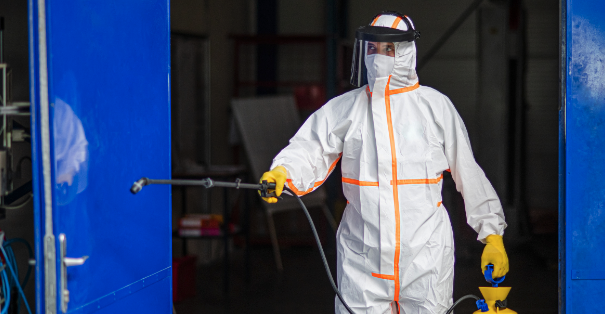SafeDE News
Smarter workplaces are safer workplaces. SafeDE is your resource for OSHA news, regulation changes, recalls, and everything to keep your business safe.
Recognizing Warning Signs of Heat Illness at Work
The Growing Heat Challenge
Heat illness is a serious workplace hazard that's becoming increasingly common. There were 36 work-related deaths due to environmental heat exposure in 2021, and about 2,300 people in the United States died in the summer of 2023, with the cause of death being excessive heat, the highest in 45 years of records.
Workers in construction, landscaping, utilities, postal service, cooking, firefighting, and oil and gas operations face the highest risk, especially when working in hot environments with limited ventilation or air conditioning.
Understanding Heat Illness: Know the Warning Signs
Heat illness encompasses a range of conditions that occur when the body cannot cool itself effectively. Here's what every employer and worker needs to know:
|
Condition |
Symptoms |
Response |
|
Heat Rash |
|
|
|
Heat Cramps |
|
|
|
Heat Exhaustion |
|
|
|
Heat Stroke |
|
|
|
Muscle Breakdown (rhabdomyolysis) |
|
|
Industry-Specific Heat Safety Tips
Construction
- Schedule heavy work before 10am and after 4pm.
- Create mobile shade with pop-up canopies or truck-mounted umbrellas.
- Rotate crews during peak heat hours.
Agriculture
- Use early morning harvesting schedules.
- Provide cooling stations near fields.
- Consider heat-resistant crop varieties and adjust planting schedules.
Landscaping
- Plan route efficiency to minimize midday exposure.
- Carry portable shade and cooling towels.
- Use reflective clothing when possible.
Warehousing/Manufacturing
- Increase ventilation and air circulation.
- Install fans and cooling systems.
- Schedule breaks in air-conditioned areas.
Postal/Delivery
- Plan routes to include shaded parking spots.
- Use insulated vehicles when possible.
- Schedule indoor tasks during peak heat hours.
First Aid Essentials
When heat illness strikes, quick action saves lives:
Immediate Steps:
- Move to cooler area - shaded or air-conditioned space
- Cool immediately using:
- Cold water immersion or ice bath
- Remove outer clothing and heavy protective gear
- Apply ice or cold, wet towels to head, neck, trunk, armpits, and groin
- Use fans to circulate air
- Stay with the worker - conditions can worsen rapidly
- Call 911 if there's confusion, slurred speech, or unconsciousness
Get Expert Help
Don't navigate heat illness prevention alone. SafeDE offers free, confidential consultations to help Delaware employers create effective heat illness prevention programs tailored to their specific operations.
Ready to protect your team from heat illness? Contact SafeDE today for your complimentary safety consultation. No citations, no penalties, just expert guidance to keep your workers safe and productive.
Get SafeDE News
Workplace safety for all businesses.
SafeDE provides FREE comprehensive onsite surveys for small and medium sized private sector establishments to identify potential workplace hazards, improve safety and health management systems, and assist in voluntary compliance with federal OSHA regulations.
Related News
.png)
2023 Occupational Injury, Illness, and Fatality Data
-1.png)
Crane Hand Signals: Guide to OSHA-Compliant Safety

Essential PPE for Staying Safe and Comfortable in Hot Work Environments
.png)
Lockout Tagout Training: Essential Safety Program

The 5 Rules of Effective Incident Reporting
.png)
GHS Label Requirements for Shipping: Tips and Guidelines
-1.png)
Preventing Ergonomic Injuries: Tips and Strategies
-1.png)

-1.png)
.png)

